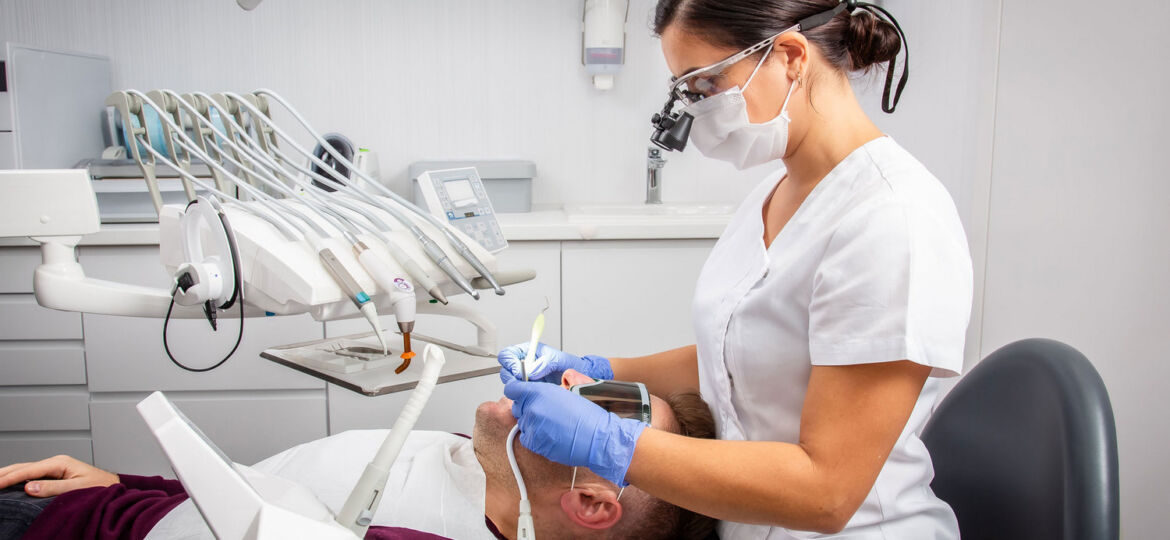
Intraoral radiography is a long-standing and essential tool used to support the diagnosis, treatment, and management of dental conditions.
Conventional intraoral x-ray equipment is designed to be fixed to the wall or ceiling, with the exposure button located behind a protective barrier to ensure the operator receives no exposure to x-rays.
Handheld x-ray devices, developed in the early 1990s for military medicine and humanitarian missions, have increased in popularity in dental practices.
Both wall-mounted units and handheld devices are sources of x-rays used to produce dental images with film, phosphor plates, or digital sensors.
Handheld devices are an appealing solution for dental practices wanting to avoid the cost of purchasing wall-mounted units.
In order to be legally marketed in the United States, hand-held dental X-ray units must comply with FDA’s radiation safety and medical device requirements.
Manufacturers of these devices must submit a Premarket Notification 510(k) for evaluation by the U.S. Food and Drug Administration for safety and effectiveness before the product is cleared for sale, unless exempt.
Also, manufacturers of these devices, as well as Initial Importers, are required to register annually with the FDA in addition to other requirements.
Hand-held dental X-ray units that have been certified by the manufacturer to meet the FDA’s radiation safety standards bear a certification label or tag, a warning label, and an identification (ID) label or tag on the unit’s housing.
All labels/tags should be in the English language and permanently affixed or inscribed on each product so that they are legible and readily accessible when the X-ray unit is fully assembled for use.
The Certification Label should state: “This product complies with 21 CFR 1020.30 – 1020.31”, “This product complies with 21 CFR Subchapter J” or other similar language.
The Warning Label must be on the x-ray panel of the unit and state these exact words: “This X-ray unit may be dangerous to patient and operator unless safe exposure factors, operating instructions and maintenance schedules are observed.”
Finally, the Identification (ID) Label must contain:
▪ Full name and address of the manufacturer of the unit.
▪ Place of manufacture.
▪ Month and year of manufacture.

Dental X-Ray Exposure Alignment Device
Aligner, Beam, X-Ray
Product Code: EHA
Submission Type: Premarket Notification 510(K) Exempt
Regulation Number: 872.1820
Device Class: 1
GMP Exempt: No
Summary Malfunction Reporting: Eligible.
Dental X-Ray Position Indicating Device
Collimator, X-Ray
Product Code: EHB
Submission Type: Premarket Notification 510(K) Exempt
Regulation Number: 872.1840
Device Class: 1
GMP Exempt: No
Summary Malfunction Reporting: Eligible.
Dental X-Ray Film Holder
Holder, Film, X-Ray
Product Code: EGZ
Submission Type: Premarket Notification 510(K) Exempt
Regulation Number: 872.1905
Device Class: 1
GMP Exempt: Yes
This device is also exempted from the GMP regulation, except for general requirements concerning records (820.180) and complaint files (820.198), as long as the device is not labeled or otherwise represented as sterile.
Summary Malfunction Reporting: Eligible.
The mostly used handheld x-ray device cleared by the U.S. Food and Drug Administration is the pistol design, such as the KaVo Nomad Pro 2. Weighing about six pounds, this cordless, lightweight device produces up to 600 sharp, high-resolution diagnostic images, on a single battery charge.
The FDA is aware of hand-held dental X-ray units that do not meet these requirements, but being sold online by manufacturers outside the U.S. and directly shipped to customers in the U.S.
To ensure that you purchase and use hand-held dental X-ray units reviewed and tested to meet the FDA’s standards for radiation-emitting electronic products:
1. Verify that your device bears certification, warning and ID labels as described above.
2. Ask your vendor whether the device has been reviewed and cleared by the FDA.
3. Access the FDA Medical Device Approvals and Clearances searchable database to verify that the X-ray unit you are using has been reviewed by the FDA, unless exempt.

If you become aware of a device that you think is hazardous or does not meet FDA’s radiation safety or premarket clearance requirements, contact your state regulatory agency, which will then notify the FDA.














